JANUARY 2024
I’ll start by wishing each and every one of you all the best for 2024, and thank you for being readers and for all your support over the years through phone calls, e-mails, wonderful surprises of all sorts, interesting information, and much more. You, as my readers, are the impetus and the incentive which makes this newsletter “go,” and I don’t thank you often enough.
In that regard, I’ve long realized that I lack an adequate way for you to provide feedback, ask questions, offer criticism (goodness knows I’m capable to running down rabbit trails into holes on most every front and frequently need to be reminded of many and varied shortcomings), or simply touch base. I don’t plan to offer the kind of response page that the wonderful woman who brings this newsletter to you as my webmaster, Tipper Pressley, offers with both her blog and vlog. But then she’s a technological wizard along with having a work ethic and ability to get things done I can only envy. But you can reach me readily by e-mail (jimcasada@comporium.net) and I welcome e-mails offering anything from “howdy” to “thanks” or “you don’t know what you are talking about, and here’s why.” I do my level best to respond to each and every contact, so if you appreciate any aspect of this newsletter or just want to say howdy, please do so.
I didn’t do a December number for various reasons, and Tipper is probably thankful given the busy nature of her month. But for this issue I have all sorts of special things to share. These include multiple sales listings as I continue valiant if less than totally successful efforts to downsize and reduce a lifetime accumulation of lots of items in lots of categories. These include separate listings of a number of items related to fly fishing, something which was a central feature of my sporting life from early boyhood until recent years when increasing problems with neuropathy and balance mitigated against wading. I have lists of fly rods (some rare and highly collectible; others just functional everyday ones), several dozen reels (most of a functional but not expensive nature); fly lines in a variety of weights and configurations—floating sinking, sink tip, double taper, and the like; accessories and paraphernalia of the sport; and flies. If you would like to peruse any (or all) of these lists, simply e-mail me at jimcasada@comporium.net and I’ll send you a Word document.
My other special offer is far more extensive. It involves virtually all the turkey hunting books I have for sale. I’m offering them at a whopping 25% reduction from list price, and if you buy $100 or more I’ll chip in free shipping as well. I have considerable overstock and here’s a grand opportunity for turkey hunters to add to their collection. Again, if you are interested let me know by e-mail and I’ll send the full list of books (more than 200 turkey titles) in a Word document via e-mail.
***********************************************************************************
JANUARY REFLECTIONS AND RECOLLECTIONS
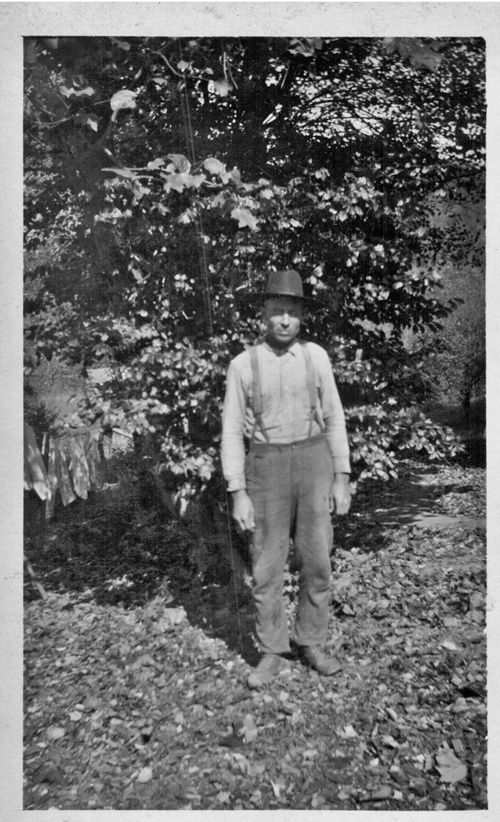
As those of you who have been regular readers of this newsletter already know, I absolutely adored my paternal grandfather, Joe Casada. While he was, in many ways, a cantankerous, bull-headed, strange soul who didn’t always get along with his wife and children and sometimes seemed distant or even uninterested in the world in general, but I dearly loved him. Or at least that’s the way my siblings and some of my cousins remember him. For those younger than me, the fact that he spoke almost in a whisper–truly a soft-spoken man–and was also hard of hearing may have been a factor. That was odd in itself, because normally folks who have hearing difficulties tend to speak quite loudly. Yet it was very much in keeping with Grandpa’s general quirkiness.
There are countless moments and incidents from the time I spent with him, just a boy and another “boy” trapped in an old man’s body enjoying one another’s company, but one of the most poignant and memorable of those is associated with January. So join me as we go back to that morning of bitter cold, squirrel hunting, a skiff of snow, and a bad accident. I recall the whole scenario with bittersweetness, but so much of what happened epitomizes the essence of Grandpa Joe’s character I think you, as readers, might find a fairly detailed account of the event interesting. What follows is a somewhat altered and slightly expanded version of an account of the event I wrote for the little newspaper in the town where I grew up and which Grandpa Joe called home.
*******************************************************************************
Each New Year brings us promise for the future. It is also a fine time to pause and ponder the past. January is, after all, a month for reflection as well as resolutions. I find that as my earthly years lengthen my allegiance to the past strengthens. Meanwhile my hair thins and whitens, once boundless energy has long since abated, and there’s realization that I need to follow the advice of Toby Keith’s song, inspired by Clint Eastwood: “Don’t Let the Old Man In.” All of us are inevitably part of the inexorable march of the years, and with every passing year living in the past becomes increasingly pleasant and a challenge to the present. There’s nothing particularly new or newsworthy there. After all, and a goodly portion of most of these monthly newsletters involves looking back with longing and love.
Some of that perspective is nothing more than a reflection of age, because I’m convinced that a normal part of the aging experience is to look back with fondness on days gone by. That’s something Grandpa Joe loved to do, but even as he did so he fought, doggedly and with all the obduracy ingrained in his character, to tilt at the windmill that is Father Time. Now I find myself wearing somewhat similar shoes and exhibiting somewhat similar habits. Mind you, Grandpa knew nothing of technology and never even learned to drive. I’m not a whole lot better but I do have far more formal education (and far less practical knowledge) and far more awareness of things he never knew or used such as telephones, televisions, and computers. On the other hand, I possess little to no ability to do things such as handle a mule team or whittle a gee-haw whimmydiddle that were second nature to him. Perhaps one way of conveying that general area of thinking, and doing so in greater detail, is through sharing a personal story set in a long ago January which is deeply meaningful to me.
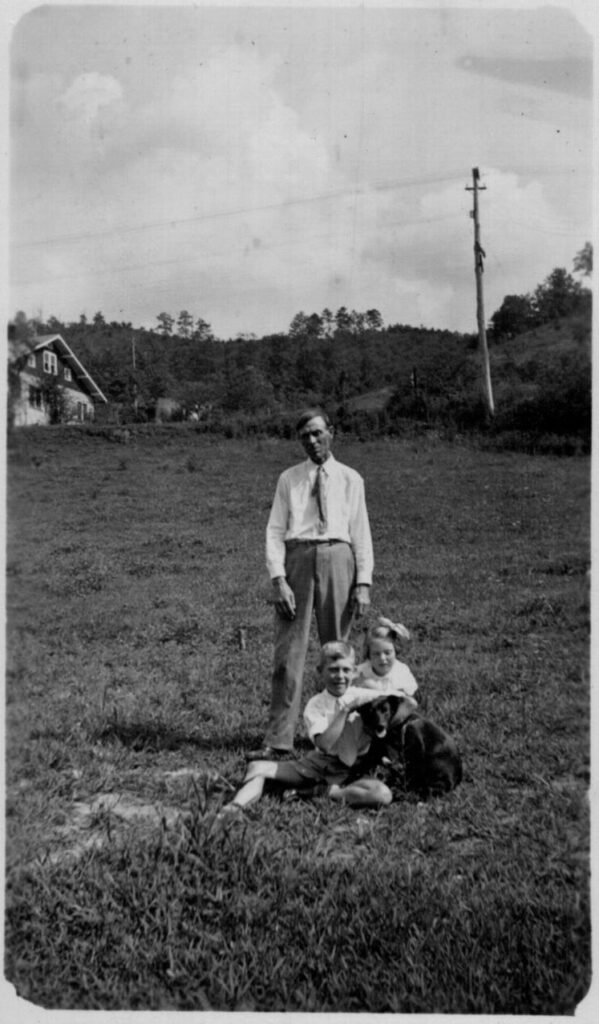
Grandpa Joe loved hunting squirrels and did so with unabated passion, never mind the toll of advancing years, aching joints, and what he often referred to simply as “the miseries.” To an energy-filled youngster mere mention of “the miseries” verged on the ridiculous, but time has certainly shown me the error of my mindset in that regard. Even though bushytail numbers weren’t what they had been earlier in his life during those halcyon days when the American chestnut reigned supreme, he still hunted them with a will. He also loved to eat them and reckoned a mess of squirrel and gravy, flanked by a platter of cathead biscuits and partnered with sweet potatoes he had grown, was about as near to culinary heaven as a man was likely to get.
It was on an early January day, bitterly cold and with a skiff of snow on the ground, that the urge for such a meal “laid holt” of Grandpa. He set out from the house with his trusty little .22, never mind bitter temperatures, snow, or the fact that it wasn’t exactly ideal weather for hunting squirrels. He would later tell me that his reasoning was that there had been several frigid days in a row and that, woeful weather notwithstanding, just like humans “squirrels had to get a living.” Alas, his hunt went bad in a big way. Grandpa slipped and fell, perhaps a half mile from the nearest road, and shattered his hip.Somehow he managed to slide and crawl through the snow until he reached the top of a steep bank flanking old U. S. Highway 19 above the little town of Bryson City which he called home (and where I grew up). Unable to attract attention from passing vehicles and realizing that something had to be done, Grandpa gritted his teeth, turned on his side to his good hip, and slid down the to the roadside. From there he was transported to the hospital.
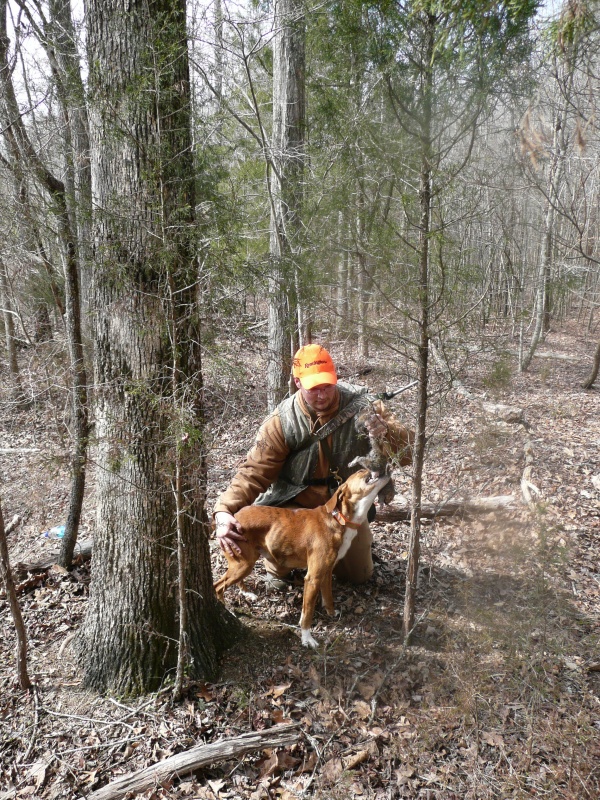
Somehow this tough old man survived the ordeal, and folks at the hospital later told my father that a lesser man would likely have died. They were of one voice in stating that they had never seen “anyone who could stand more pain.” Once Dr. Mitchell, a gifted physician who blessed the little mountain community of his raising for decades with rare medical skills, had set the broken bones and Grandpa came out of anesthesia, Grandpa Joe adamantly refused any and all pain medication. Eventually, after months of slow recovery, perhaps hastened by the fact that my sister and I eventually hid the crutch he was using, Grandpa was able to walk again and in time got about quite well. Predictably, given a stubborn mindset which those who know me well will realize was passed down to at least one of his grandchildren (and probably others although for the sake of family comity I’ll refrain from such judgments), come the following autumn he once again took to the squirrel woods. Late fall and winter bushytails jaunts remained a part of his life until two or three years before his death.
For several months during his period of recuperation, Grandpa lived with us. Mightily irritated by the fact he needed help and wasn’t completely independent, Grandpa had simply presented too many problems for Grandma Minnie to manage. The period spent caring for him, what with three children in the house, one of them an infant, must have been a great trial for my parents. For me, though, it was a singular blessing. It meant countless hours spent alongside an aging man as he reminisced, told tales of daily existence in what had been a hard but in most ways joyful life, and shared hunting and fishing adventures from days gone by.
He also offered what I now realize was a great deal of wisdom. That came in the form of telling about all sorts of vanishing folkways, describing practices associated with daily existence in a hardscrabble way of life, relating weather lore, and so much more. For once in my life I showed some common sense and soaked up those reflections from a wizened and in many ways wise man of the mountains like a human sponge. Then, and now, I cherished every moment.
Grandpa’s insight and eagerness to look back on life as he had known it formed an unfolding verbal chronicle of traditional southern Appalachian ways, and my only real regret is that his musings weren’t recorded or that I didn’t write them down at the time. No small portion of my work as a writer has drawn on what he shared, and it will be fundamental to a book I’m currently beginning work on in partnership with my cherished friend, Tipper Pressley. Things went so well with our first joint effort, Celebrating Southern Appalachian Food: Recipes & Stories from Mountain Kitchens, that we’ve decided to expand our literary horizons to embrace other aspects of the highland homeland both of us love so deeply. Meanwhile, I can begin a new year with good thoughts of Grandpa Joe and Januaries from auld lang syne (times long past), wishing you good cheer in the new year, and concluding with recipes for the kind of fare we often enjoyed at this season of the year.
RECIPES
SQUIRREL AND DUMPLINGS
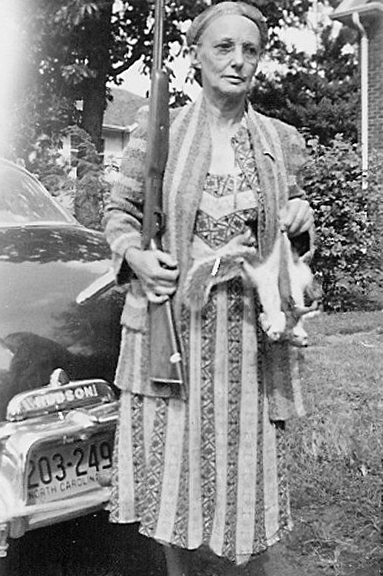
Since squirrel hunting underlay Grandpa Joe’s bad accident, along with the fact that I’ve got four bushytails in the refrigerator right now that made the mistake of getting within range of my Gamo pellet gun, maybe starting out with a squirrel recipe is a good way to begin. I realize not nearly as many folks hunt or eat squirrels as was once the case, but that in no way diminishes their table value. After all, if a hog fattened on corn makes some mighty fine eating, why should the same not hold true for a squirrel that has been feasting on a diet where nuts loom mighty large. For a meal that will feed a lot of folks, stick to a fellow’s ribs, and is pure delight when it comes to taste, squirrel and dumplings is hard to beat. In fact, it was pretty much the last thing my maternal grandmother, as I take a turn to the other side of the family, would eat with any gusto in her last year or two of life (the photo shows her after a successful hunt in truly interesting garb).
2 to 4 squirrels, carefully cleaned, washed, and cut in pieces
Enough water to stew the squirrel in
1 diced Vidalia onion
1 diced celery stalk
1½ teaspoons salt (separated into 1 and ½ teaspoon measures
½ teaspoon ground black pepper
2 cups all-purpose flour
1½ teaspoons baking powder
1/3 cup vegetable oil (or, if you want to do it the traditional way, use lard)
Combine the initial six ingredients in a sizeable stewpot and bring to a rolling boil. Then reduce to a simmer until the squirrel is tender enough to come off the bone with use of a fork. Separate the meat from the bones and set aside. Save a cup of the broth for preparation of dumplings.
For the dumplings, combine the flour, baking powder, and 1 tablespoon of salt. Add enough reserved broth to work the dough with a wooden spoon. Turn it out onto a floured cutting board and knead into a ball before rolling out. Cut or pinch pieces of about 2 inches for the dumplings. Bring the broth not used for making the dumplings back to a boil and drop them in one by one. As they complete cooking, remove and set aside. Thicken the broth with a milk and flour mixture to make gravy and add the dumplings and squirrel meat back into the pot. Stir, taste to see if more salt or pepper is needed, and serve with cornbread, biscuits, and baked sweet potatoes.
BUTTERED TURNIPS
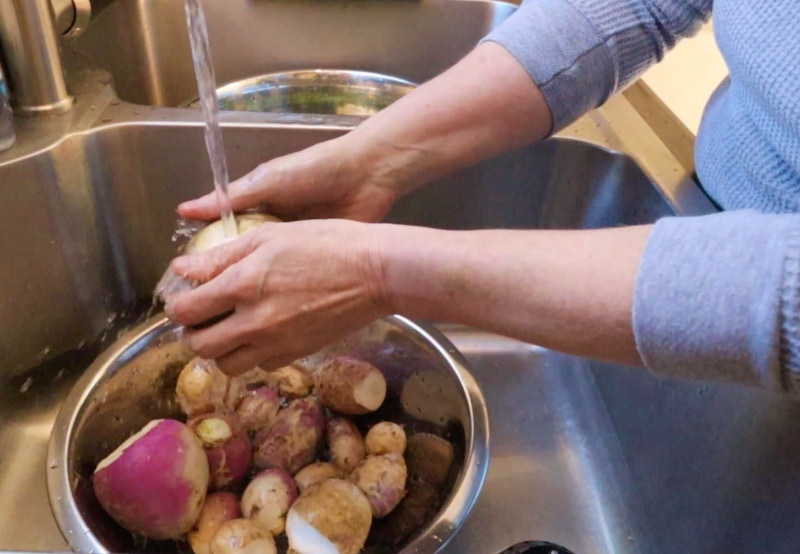
Winter traditionally meant that the vegetable portion of the menu leaned heavily in directions such as dried beans, winter squash, and root crops. In my formative years we probably ate more foodstuffs in the first two categories than root crops (other than Irish and sweet potatoes), but from time to time we would have beets or turnips. I’m not at all picky when it comes to food, enjoying pretty much everything from pickles to organ meats if they are properly prepared, but beets would have to be an exception. On the other hand, I loved turnips. As a boy I’d often pull a couple up from the garden, wash them off, and put them in my hunting coat for afternoon snacks while I was hunting squirrels. But the way I really enjoyed them was stewed and buttered.
If you can’t stew turnips, you can’t boil water. It’s that simple. Peel enough turnips for your needs (one per person is a precious plenty), cut them into 1-inch chunks, and place in a stewpot or pan. Bring water to a boil and continue cooking until a fork easily pushes through a chunk of turnip. Drain, season with salt and pepper, and place a good chunk of butter amongst the turnips to melt and mingle. If you wish, you can follow Grandpa Joe’s practice and mash them up with a fork to be sure the butter gets blended in. Buttered turnips go fine with pork, cornbread, or as part of an all vegetable meal. Of course haggis and “neeps” (turnips) is the most tradition rich of all Scottish dishes.
PUMPKIN CASSEROLE
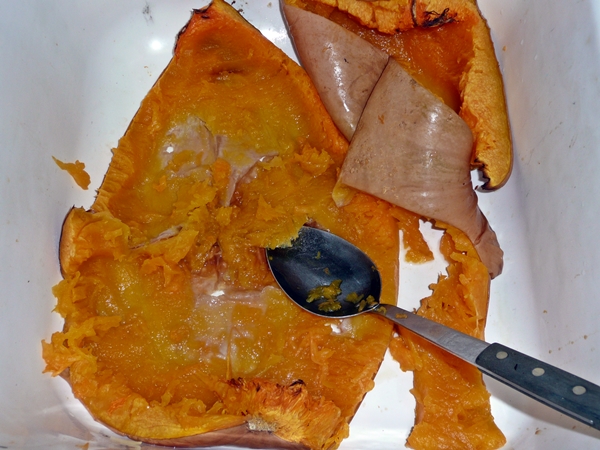
Pumpkin is a prominent member of the winter squash family that is used more frequently as a key ingredient in some dessert than as a vegetable dish. This recipe falls somewhere in between and can be used either way. If it seems to resemble a sweet potato casserole, that’s because that versatile root crop can be substituted in this recipe.
4 cups pumpkin, worked up, cooked, and blended to puree status
4 tablespoons maple syrup, brown sugar, or honey
½ cup whole milk
1 large egg
½ teaspoon salt
1 teaspoon vanilla
½ cup (packed) brown sugar
½ cup pecans or English walnuts or, for a distinctive taste, ¼ cup black walnut meats—chopped
¼ cup all-purpose flour
3 tablespoons softened butter
Mix the first six ingredients with a whisk. Next mix the remaining ingredients (nut mixture) with a fork. Pour the pumpkin mixture into a baking dish and top with the nut mixture. Bake at 350 degrees until the nut mix on top reaches golden brown.
BAKED ONIONS
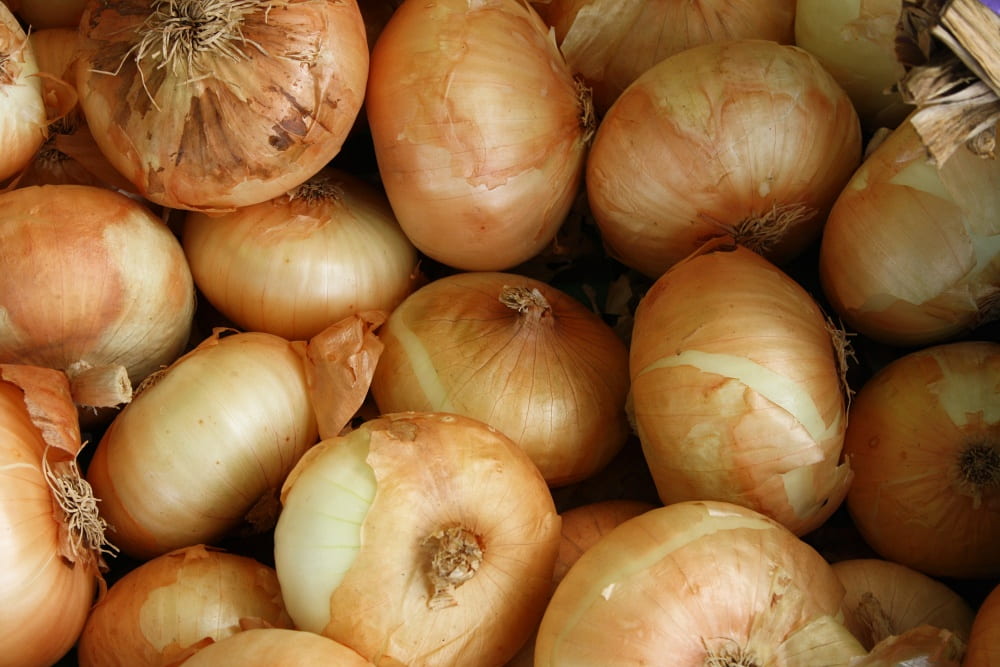
This recipe comes from Celebrating Southern Appalachian Food and is out of Tipper Pressley’s kitchen. I’ve tried it multiple times, experimenting a bit with bacon and types of cheese. It’s a dandy. I’m little short of amazed Momma didn’t come up with something similar, because she used onions a lot and was mighty partial to dishes she could put in the oven to cook while she dealt with other matters. I’ve often wondered how she balanced a bunch of foodstuffs going all at once with all sorts of other daily doings, but I don’t remember her ever once burning anything. I’m sure she did but if so it lies outside my recall. This is simplicity itself.
5 to 8 onions, sliced thin
Salt and pepper to taste
3 tablespoons butter
3 tablespoons water
Shredded cheese
Place sliced onions in a greased baking dish and season with salt and pepper. Dot with butter and sprinkle water atop the onions. Cover dish and bake at 400 degrees for 30 to 40 minutes or until the onions are tender. During the final 10 minutes of cooking, top with shredded cheese and remove the cover. TWO TIPS: Sharp or extra sharp cheddar does especially well, and if you want to add a bit of flavor and flair, sprinkle fried bacon bits atop the dish prior to serving.
SILKY SMOOTH CUSHAW SOUP
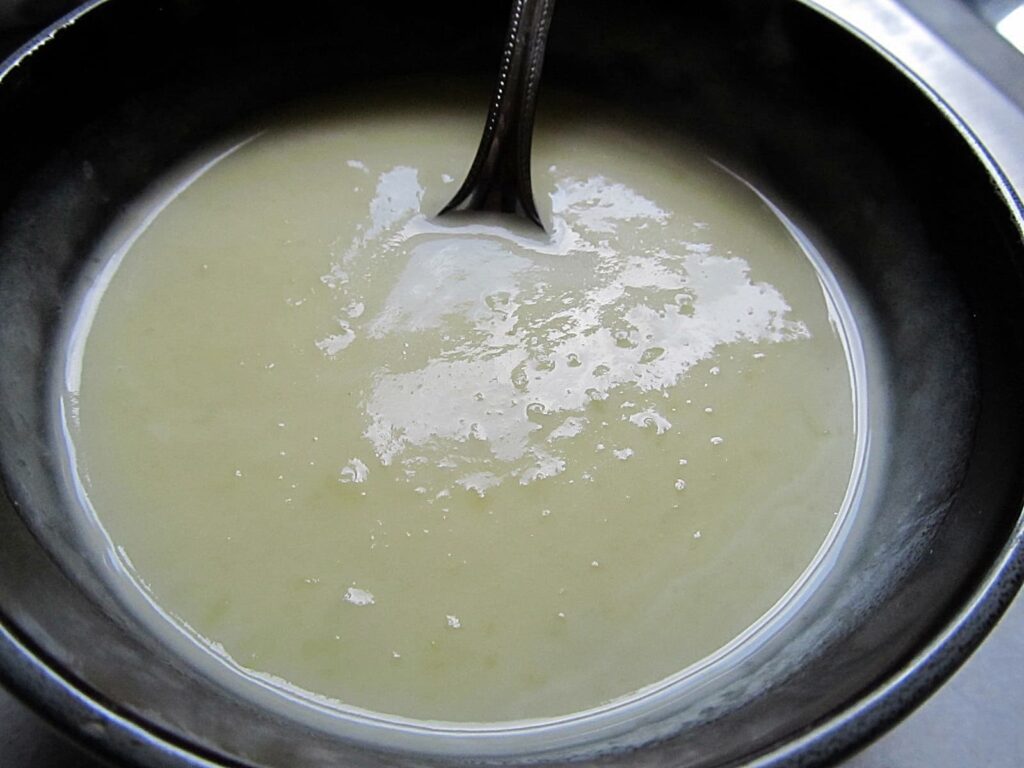
Most of my experiences with cushaws, which are perhaps the sweetest of the winter squash, have involved things like cushaw butter or cushaw custard pie. However, it is a far more versatile vegetable than that, and here’s a way to make a rich, hearty soup that pairs really well with a slice or two of chicken topped with avocado slices or crispy toast points.
10 cups peeled, cubed cushaw
4 cups chicken stock
1 cup diced onion
2 tablespoons butter
¾ cup half-and-half or ½ cup whipping cream
Combine the cushaw, chicken stock, and onion in a large stock pot and bring to a boil. Reduce heat and allow to simmer for 40 minutes. Remove from heat and add butter. Use an immersion blender or whisk vigorously to make into a creamy soup. Add half-and-half and whisk until combined.
This is a quite rich recipe and a cup or small bowl will probably be enough for most folks. The recipe can be halved.